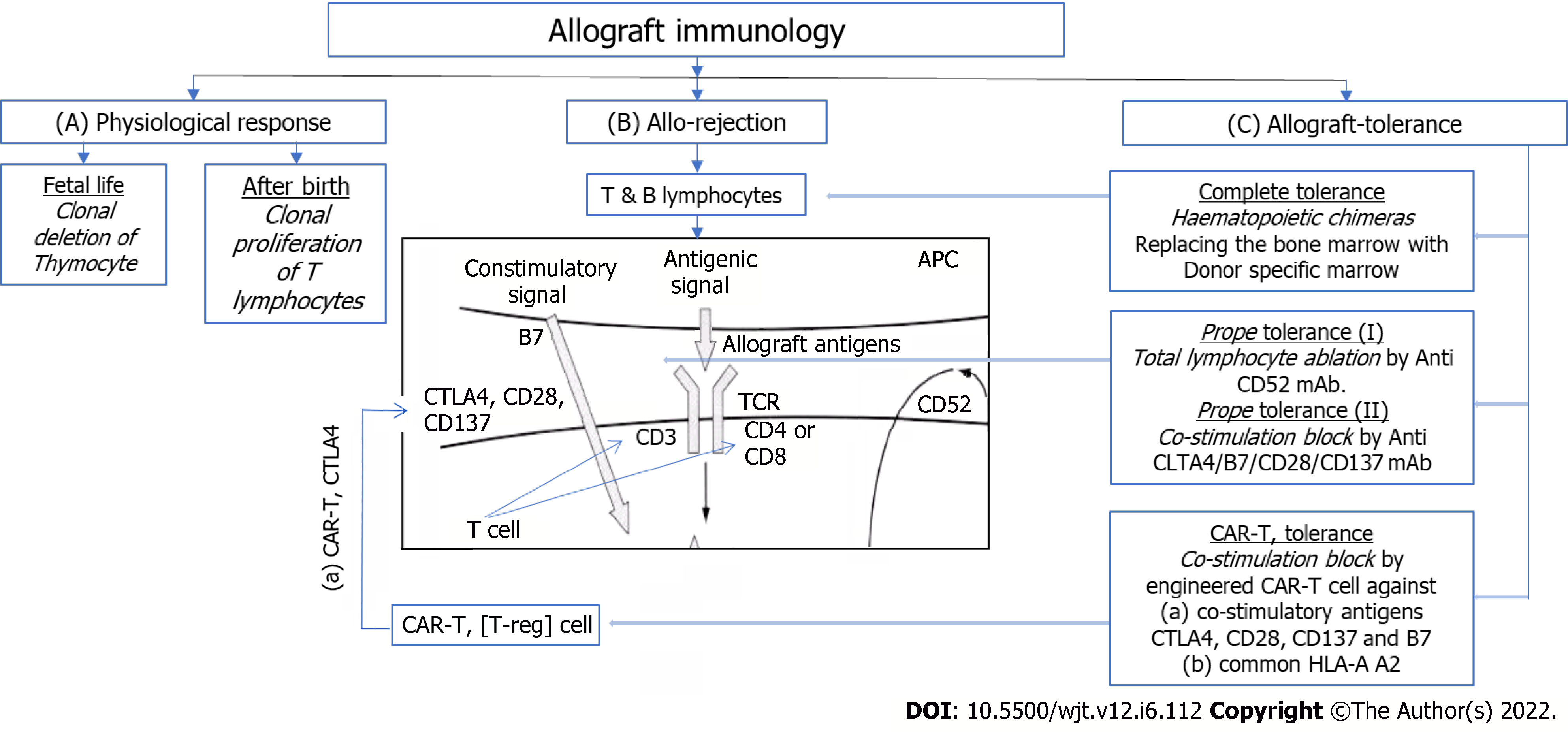Copyright
©The Author(s) 2022.
World J Transplant. Jun 18, 2022; 12(6): 112-119
Published online Jun 18, 2022. doi: 10.5500/wjt.v12.i6.112
Published online Jun 18, 2022. doi: 10.5500/wjt.v12.i6.112
Figure 1 The mechanisms of tolerance and rejection.
A: In fetal life, T-lymphocyte response as the clonal deletion of auto reactive T-lymphocytes in the thymus to the fetal antigens so that the organism is rendered self-tolerant to self-antigens, whereas after birth these changes to the state of clonal proliferation on exposure to exogenous antigens; B: In presence of allograft the immune reactive T-lymphocytes and subsequently B-lymphocytes, carry out the process of immune response and rejection as carried out by hematologic immune cells. Suppression of this mechanism leads to graft maintenance; C: Possible tolerance inducing strategies. APC: Antigen presenting cell; CD: Cluster differentiation; T-eff: T-effector; T-reg: T-regulator lymphocyte; CTLA4: Cytotoxic T-lymphocyte associated antigen 4; mAb: Monoclonal antibody; CAR-T: Chimeric antigen receptor encoded T-reg cell.
- Citation: Suhail SM. Tolerance protocol of living kidney transplant for developing countries through basic strategy of lymphocyte depletion. World J Transplant 2022; 12(6): 112-119
- URL: https://www.wjgnet.com/2220-3230/full/v12/i6/112.htm
- DOI: https://dx.doi.org/10.5500/wjt.v12.i6.112









